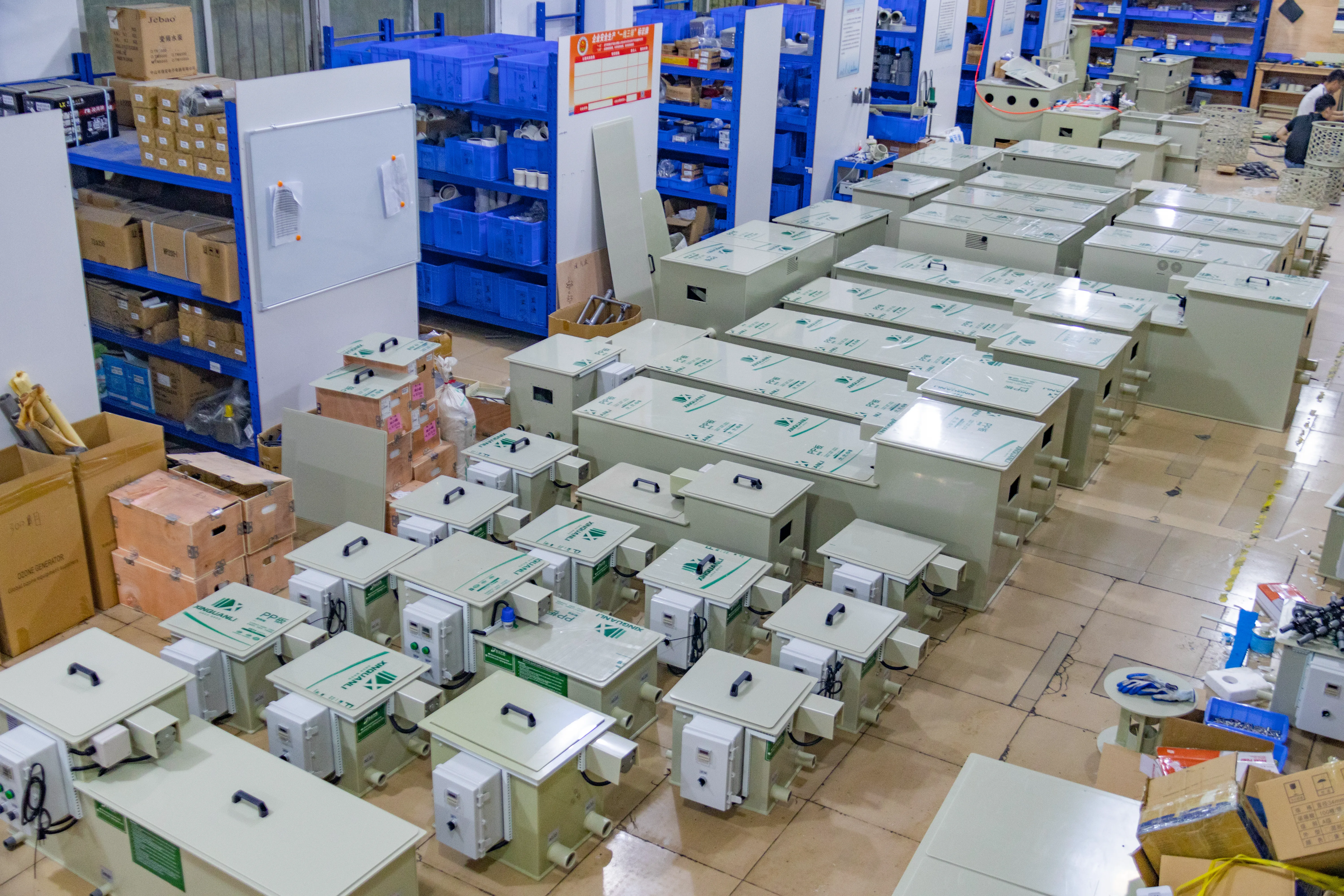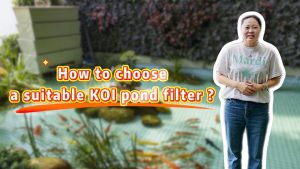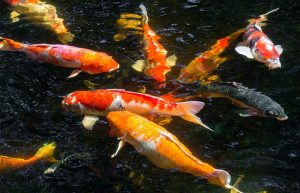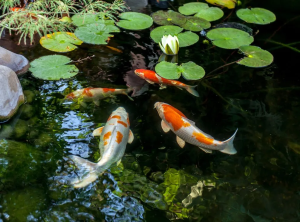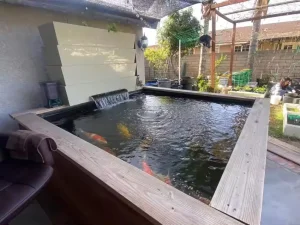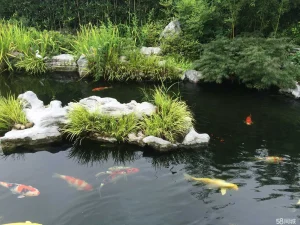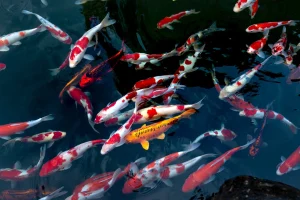Things to note before adding new fish to the pond:
1.When raising koi for the first time, the new water should be left for a period of time, and the filter and air pump should be turned on. The fish can only be released after about three days to a week.
2.When the new fish arrives home, pour the raw water at home into the large storage box, put the bag in it, and soak it for 30-50 minutes to ensure that the water temperature is consistent.
3.Add potassium permanganate to the raw water. The concentration will make the water pink. Pour out part of the water in the bag and add the water from the organizer into the bag, repeat several times. This process takes about 10-15 minutes.
4.Move the fish into the isolation tank. Five thousandths of sea salt should be added to the isolation tank first, and Japanese yellow powder should be added according to the instruction manual to strengthen oxygenation. After three days, the fish can be transferred to your own aquarium or pool without any problems.
5.Do not feed the fish within three days after entering the new environment. Do not feed until the fish has fully recovered.

Things to note when raising carp on a daily basis:
1.For a new tank or pool, you should pay attention to changing more water every day. If the water is in good condition, you can change it twice a week.
2.Pay attention to the status of the fish every day. If there is a fish that does not eat or lies in a corner, you should consider whether the fish is sick.
3.When transferring fish, it is best to use a professional koi fishing net, usually a fairy net, which will not easily cause damage to the fish.
4.If you see a fish rubbing its body, it usually means that the fish has parasites, so you can consider killing them.
5.If you see that the water is always turbid, you should consider whether there is something wrong with the filtration system.
6.When fish are sick, don’t rush to isolate them. If isolation is required, there should be an isolation tank with a complete filtration system.
7.Do not purchase large quantities of koi from different fisheries at one time to prevent cross-infection.
8.You should prepare some commonly used medicines at home, such as coarse salt, Japanese yellow powder, potassium permanganate, antibiotics, insecticides, etc.
9.When buying fish, you should consider the size of your water body and the efficiency of the filtration system, and do not raise fish density too high.

Let’s talk about raising water, stocking fish, and adding daily medicines in more detail. The above description is a bit general, and many novices don’t understand it very well.
- Provide water.To raise koi well, the key step is to raise good water. With good water, koi can survive and grow easily. How to maintain good water? ? Generally, the water must be well maintained before releasing fish. There are several specific methods: First, let the tap water sit naturally for more than three days. 2. Put the tap water in the sun for two days. The third is to boil the tap water to 40 degrees and leave it for 8 to 24 hours. Another way is to use solar water, but because many solar cells have aging problems, the water often contains some metal oxides, so it is generally not recommended. The water raised through the above methods is generally used for all water changes and for initial fish farming. If the water is changed normally, the requirements can be appropriately reduced according to the actual situation! !
- Change the water. To raise koi well, you cannot be lazy and take chances. Generally speaking, it is required to change the water every day, about two-tenths of the water should be changed every day. Then do a major water change every 20 days, and it is best to have a trickle of water in and out at any time. The minimum requirement is to change it once a week, and change one-third of the water each time. If water mixing and
serious greening occur during this period, the time for large water changes should be shortened and the amount of daily water changes should be increased. If there are no special needs, please use water with high transparency for breeding, which is conducive to viewing. Changing water is the most troublesome and daily task in fish farming, and it often requires the most patience and enthusiasm!

- Release the fish. After buying the koi, do not put the fish into the tank immediately. Instead, put the fish in the tank with the bag to adapt to the water temperature (do not open the bag with the fish). If you put the fish in immediately, it will easily cause the fish to catch a cold. (The bigger the fish, the easier it is to catch a cold. The main manifestations are immobility, jumping into the tank, smashing the tank, not eating, etc. However, colds in big fish will generally heal on their own, and the risk to life is small!). It usually takes about an hour to adapt to the water temperature. If the water in which the fish was originally contained is not very dirty, it is recommended to put it into the fish tank together with the water. If the original water is very poor, it will easily affect the water quality. Turn on the filtration and oxygen explosion immediately after releasing the fish, so that the fish can easily adapt to the new environment quickly. Do not feed the fish within a week after releasing them. Firstly, the fish can adapt to the new environment as soon as possible. Secondly, you can observe whether the fish you bought has diseases. If you find any abnormality, please ask the boss to change it immediately (some fish will be replaced after being fed). It is difficult to determine the cause, and new fish generally do not eat food).
- Medication and daily management.When you go to a fish store to buy fish, the boss usually recommends some medicines for you to buy together. In fact, as long as you keep the water well and put the fish in, you don’t need to put those medicines at all. Because bosses often make rumors to ask you to buy more of their stuff. In the actual process of raising fish, I do not recommend the use of drugs, because several of my friends have caused good fish to die for no reason due to the indiscriminate use of drugs. Think about it, why do you need to take medicine when you are not sick? ? If the fish is sick, specific medicines will be selected according to different illnesses, but in general, the medicines sold by merchants are not as good as Tufangzi (except for “Bai Bi Chu” which is okay), so when fish are sick, they are generally still used. Earthwork, such as using salt, oxytetracycline, penicillium powder and berberine, etc., if the cause of the disease cannot be determined, it is recommended to add a large amount of oxytetracycline (according to my experience, this method is very effective!), because I think It seems that Western medicine believes that disease means inflammation! ! Ha ha. . . The specific disease will be analyzed in detail, so I won’t go into details here!

- Filtration and stocking amount. In addition to filtering out impurities, the most important function of filtration is to cultivate a biochemical system to allow fish to grow healthily. If the tank is not too big, I still recommend buying a filter directly from the fish shop owner, because the owner will professionally equip you with a filtration system (it saves money to do it yourself, but many small problems are very troublesome! ). During this process, you only need to ensure that the flow rate of your filtered water pump can circulate the water in the fish tank 4 times per hour, and replace activated carbon and other substances at any time according to the degree of biochemical damage in the filter. So how big a fish tank can be used to raise koi carp? How many koi carp can be beneficial to the growth of koi carp? According to my experience and related books, it is better to raise a koi of about 20 centimeters for every 60 liters to 100 liters of water. If you raise it in a tank, the length of the tank should be more than 90 centimeters. The best water depth for raising koi is 60 cm to 250 cm, and it is said that the water depth of about 200 cm is the easiest to raise big fish. When the fish is raised in the tank close to the width of the tank, the fish must be moved to a larger tank or pond in time.

